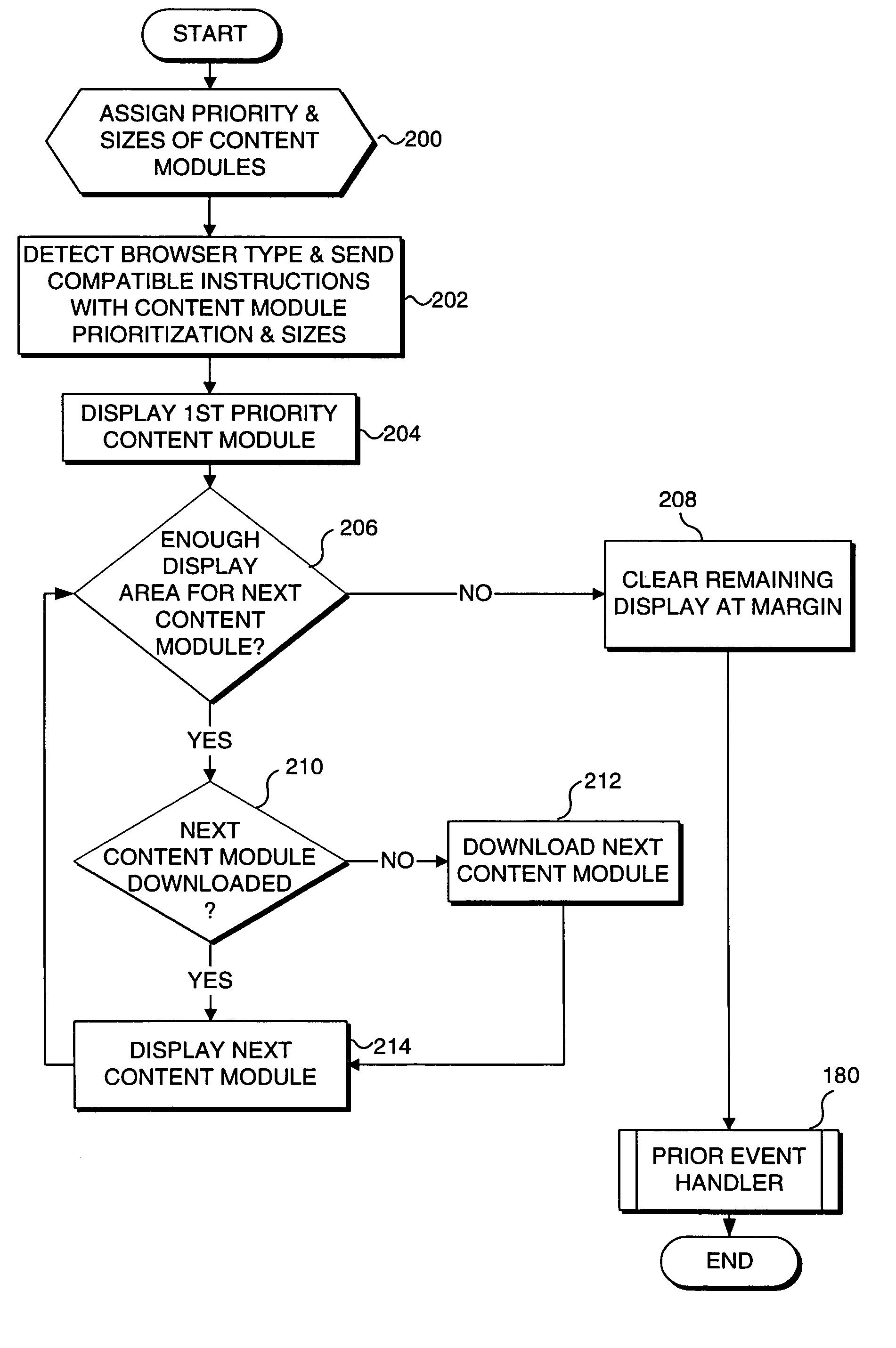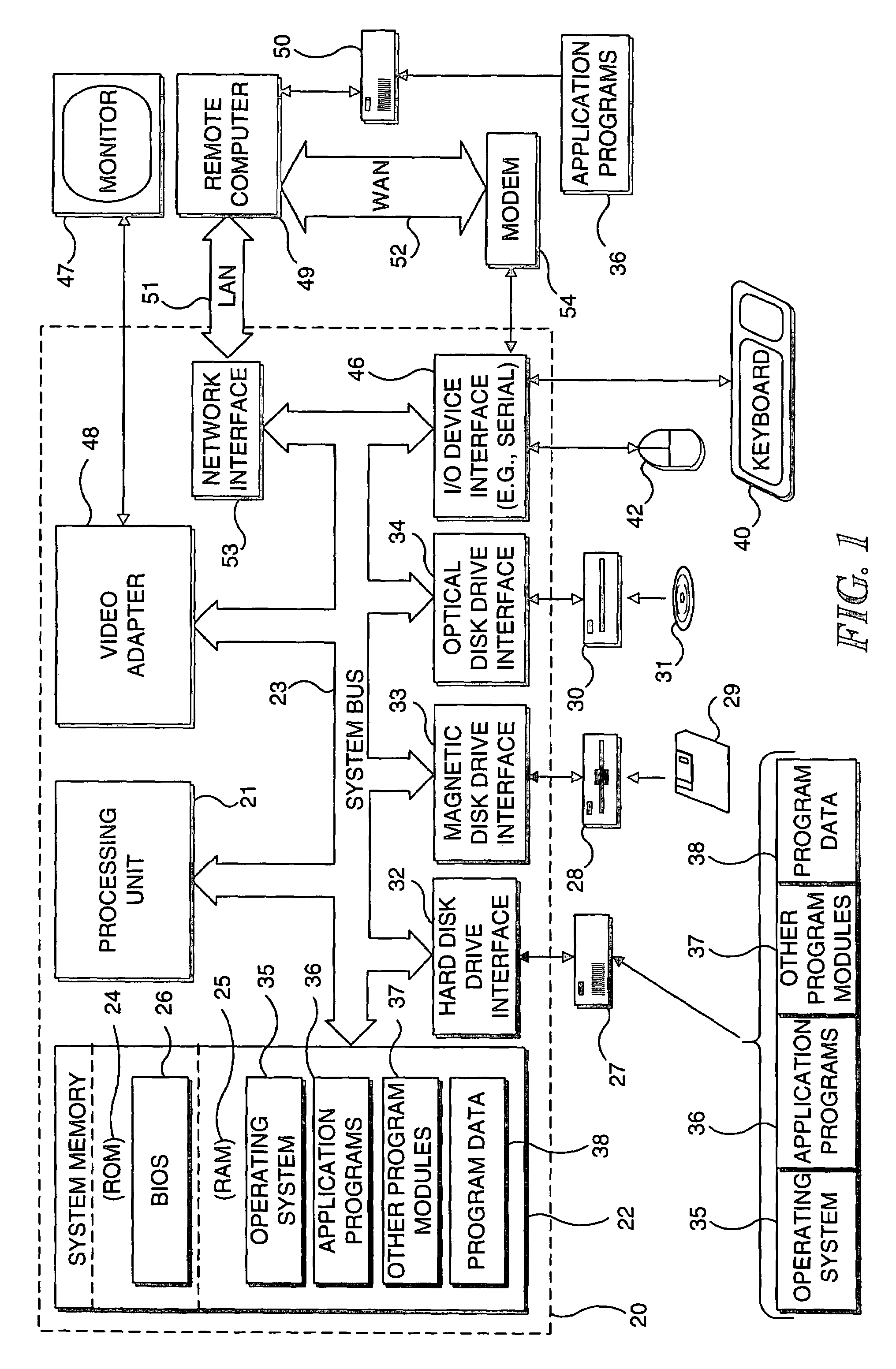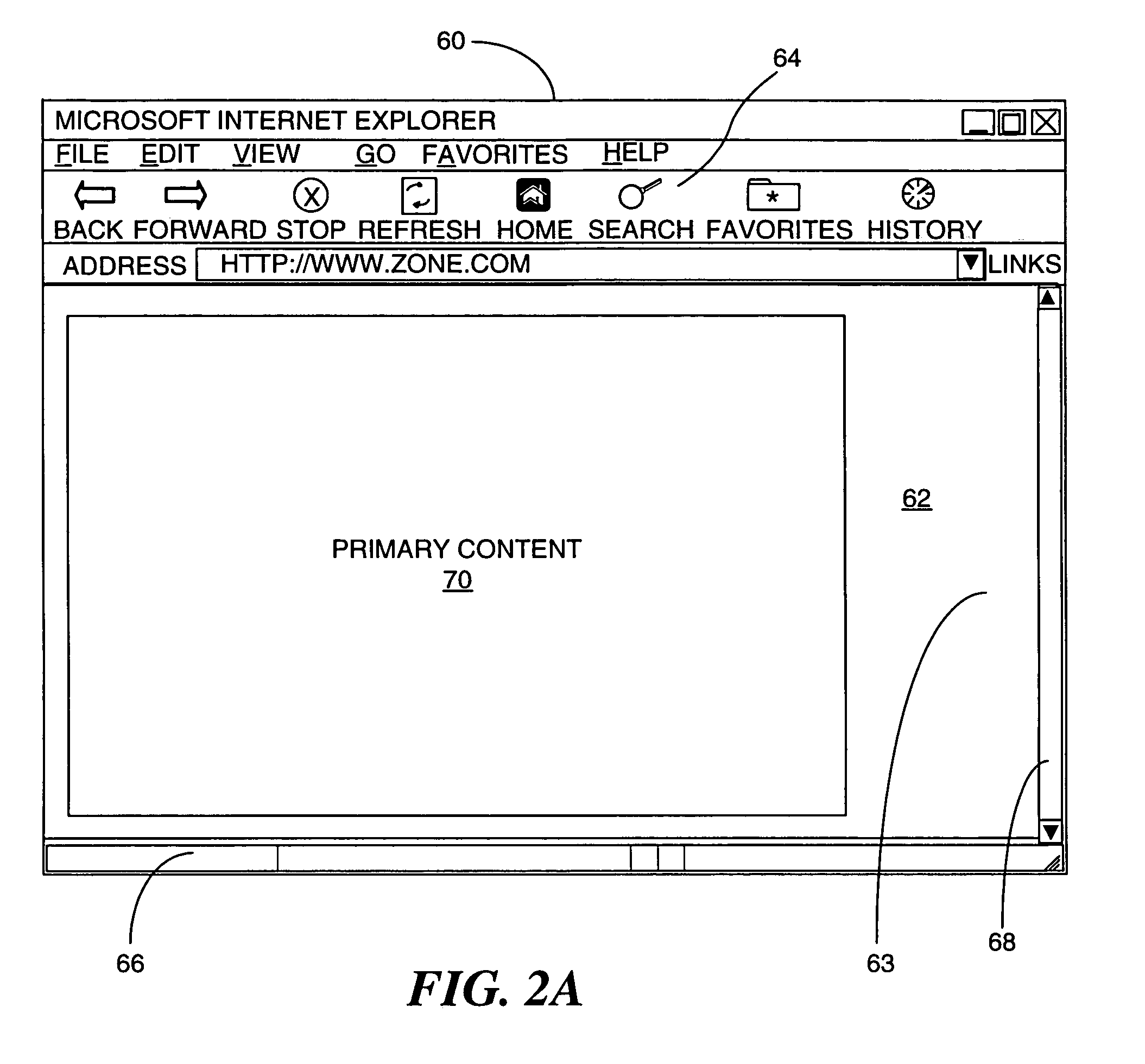Selective display of content
a content and display technology, applied in the field of content retrieval and display, can solve the problems of not being able to scroll to display hidden web page content as convenient, occupying blank space that could be used to display additional content, and being limited by the available display resolution
- Summary
- Abstract
- Description
- Claims
- Application Information
AI Technical Summary
Benefits of technology
Problems solved by technology
Method used
Image
Examples
Embodiment Construction
Exemplary Operating Environment
[0034]FIG. 1 and the following discussion are intended to provide a brief, general description of a suitable computing environment in which the present invention may be implemented, both in regard to a server that stores and provides Web pages and a client that requests the Web pages and displays them to a user. Although not required, the present invention will be described in the general context of computer executable instructions, such as program modules that are executed by a personal computer. Generally, program modules include routines, programs, objects, components, data structures, etc. that perform particular tasks or implement particular abstract data types. Moreover, those skilled in the art will appreciate that this invention may be practiced with other computer system configurations, particularly in regard to a client device for displaying a Web page, including hand held devices, pocket personal computing devices, digital cell phones adapte...
PUM
 Login to View More
Login to View More Abstract
Description
Claims
Application Information
 Login to View More
Login to View More - R&D
- Intellectual Property
- Life Sciences
- Materials
- Tech Scout
- Unparalleled Data Quality
- Higher Quality Content
- 60% Fewer Hallucinations
Browse by: Latest US Patents, China's latest patents, Technical Efficacy Thesaurus, Application Domain, Technology Topic, Popular Technical Reports.
© 2025 PatSnap. All rights reserved.Legal|Privacy policy|Modern Slavery Act Transparency Statement|Sitemap|About US| Contact US: help@patsnap.com



